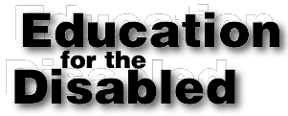It is difficult to design a comprehensive and effective policy that all school districts must follow "without taking into account the complex social and cultural conditions into which policy is eventually implemented" (Mallory, 1995, p.214). While the concept of "cultural sensitivity" in designing individual education plans for handicapped students has not been widely discussed, the perspective of different family and student make-up is important to the design of the his/her IEP. Such factors as the individual's degree of disability, age, gender, race, size, cultural ethnicity, socioeconomic status, etc., will all have effects on the student's plan. Consequently, the federal regulations created under IDEA, were "developed primarily in the context of traditional, white, middle-class, western assumptions and ideals" ("Exceptional Children", 1996). Therefore, these assumptions may not be representative of the majority families with handicapped children. Recognizing the cultural factors can only come from thorough discussions with the families and continual evaluation of the child by his/her teacher.
The concept of mainstreaming has the capability to:
increas[e] positive interactions between handicapped and non-handicapped students, between handicapped students and classroom teachers, between classroom and special education teachers, as well as between the school administrators, parents and the general public (Anderson, 1980, p.38).
Great progress in equal educational opportunities for handicapped individuals has taken place since the passage of P.L. 94-142. Obviously, the ultimate goal has not yet been achieved, nor has the acceptance of "handicapped [individuals] on the basis of their personal human qualities rather than on their exceptionalities" (Anderson, 1980, p.40). Current efforts seek to provide handicapped individuals with the least restrictive environment for learning. The increased funding, support services, and research has strengthened the term "from good will to civil rights", and has fueled the momentum toward enforcing this constitutional right.
Government 375: Educational Reform and Ideology

